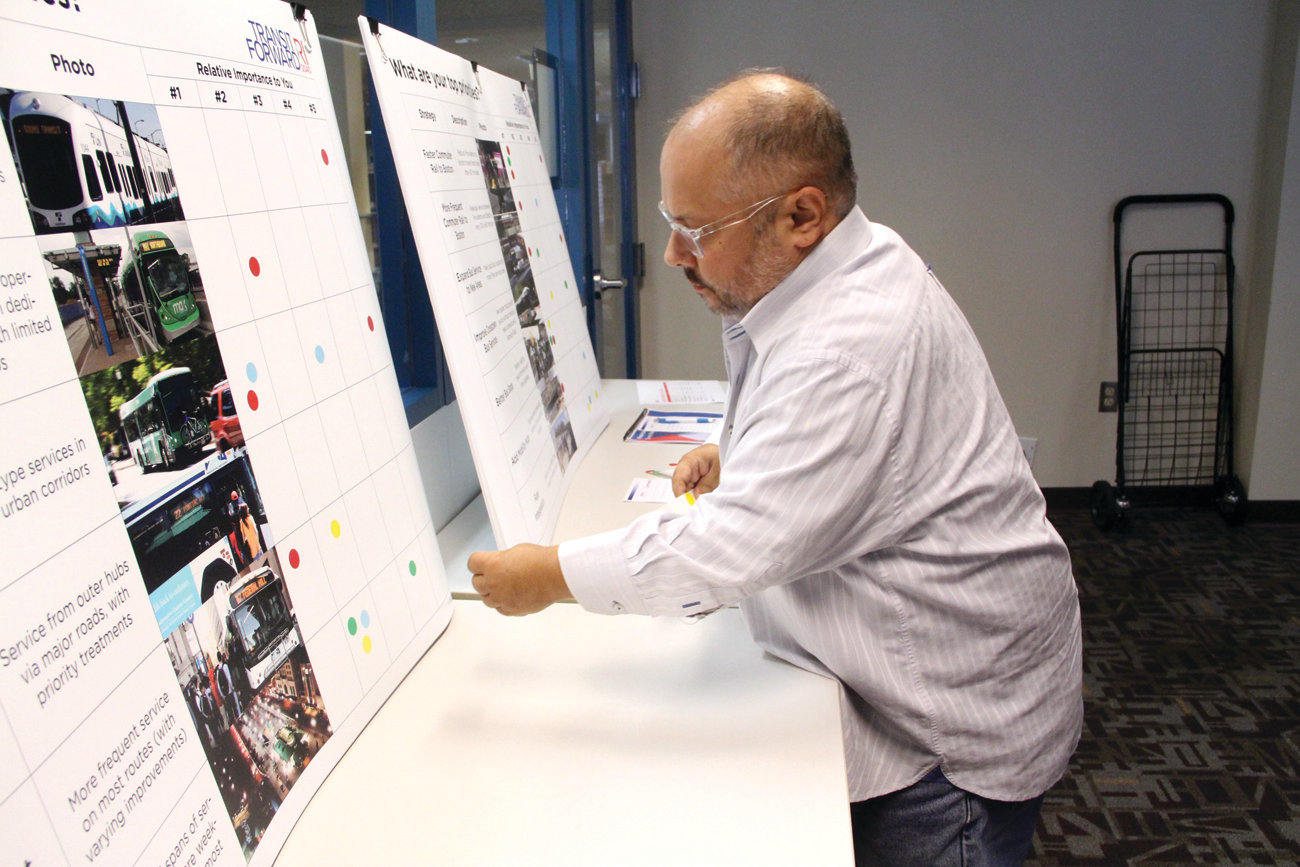Planners urge ‘blue sky’ thinking on future of state’s transit system
The Rhode Island Transit Authority has embarked on something it has never attempted – creation of a master plan that considers various modes of transportation and service to meet local community needs as well as make connections beyond Rhode Island’s borders.
The “Transit Forward RI 2040” effort got off to a public start Tuesday afternoon during the first of a series of workshops held at the Warwick Public Library.
Additional workshops were held Tuesday and Wednesday at the state Department of Administration’s headquarters in Providence, the University of Rhode Island in Kingston and the Blackstone Valley Visitor Center in Pawtucket.
Appropriately, former Warwick Mayor and RIPTA CEO Scott Avedisian returned to his hometown to attend a portion of Tuesday’s workshop. He didn’t make any public remarks, but in a brief conversation said there is no target budget to finance proposals that might come out of the plan. He expects a plan to be drafted by early next year, and depending on projected costs, bond funding would be required.
But the focus at this point isn’t on costs, but rather on what people need and how to best address the future.
“It’s to throw [the question] out there, what does the future look like?” Avedisian said.
RIPTA is addressing the planning using three scenarios, starting with identifying the most pressing needs; improving and expanding the existing system; and creating a comprehensive statewide network.
Some of the suggested innovations suggested are development of light rail lines; using the shoulders of some highways as dedicated bus lanes to ensure rapid service when the same roads are brought to a crawl by commuters; an Amtrak station at Green Airport in addition to the existing MBTA station; and “mobility hubs” in every city and town.
Among the suggestions from the more than 25 people in attendance included establishing greater connectivity between Warwick to Providence routes so as to give riders greater east and west options; the use of Uber-like services; and increased MBTA service south of Providence. The issue of automated buses was also brought up, although Gregory Nordin, RIPTA’s director of planning, didn’t see that as happening anytime soon.
As for the Uber idea, he said, “We have considered ride sharing, but I don’t see it as a significant opportunity for Rhode Island so far.”
In the shorter term, Nordin said RIPTA is in discussions to relocate its Warwick hub from the Warwick Mall to the Community College of Rhode Island’s Knight Campus. Currently, buses are using a dedicated lane that has been created by the placement of plastic Jersey barriers. He said the plan, with use of a grant RIPTA hopes to win, would be to build out the area. Overall, he believes CCRI is a preferable location for the hub as there are convenient facilities at the college and a greater demand for service.
Asked if some proposals discussed – such as the development of a light rail system – were financially impractical, Nordin said the agency is looking “for a blue sky approach” to the future of transportation. He said RIPTA would “chase” federal grants, adding that the agency has the highest mass transit ridership in the region behind the MBTA. He put the number of annual trips at 16 million, as compared to Worcester, which is slightly larger that Providence, at 3 million.
Nordin concurred that advances in technology might alter plans. He noted that RIPTA provides such features as real time information on the location of buses for cell phone users and will soon introduce for the payment of fares by cell phone.
As an example of a mobility hub, Nordin said it could offer a connection to bicycles. He said hubs would differ depending on location and demand of service.







